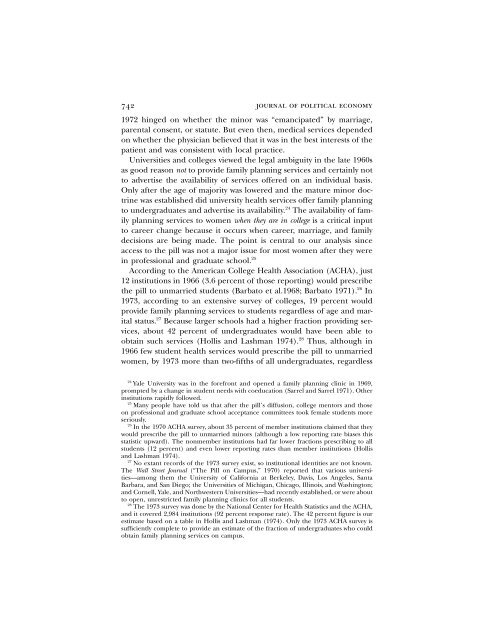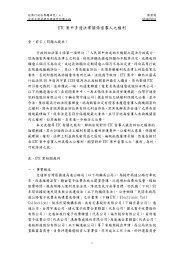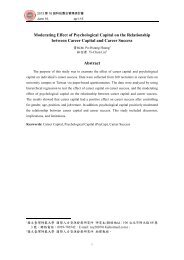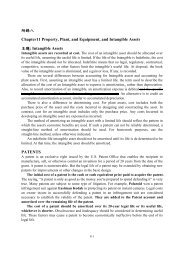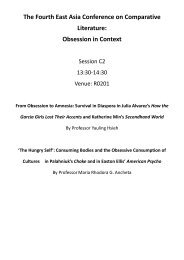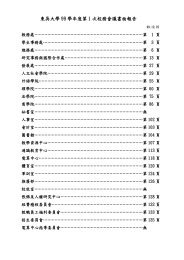The Power of the Pill: Oral Contraceptives and Women's ... - Mail
The Power of the Pill: Oral Contraceptives and Women's ... - Mail
The Power of the Pill: Oral Contraceptives and Women's ... - Mail
Create successful ePaper yourself
Turn your PDF publications into a flip-book with our unique Google optimized e-Paper software.
742 journal <strong>of</strong> political economy<br />
1972 hinged on whe<strong>the</strong>r <strong>the</strong> minor was “emancipated” by marriage,<br />
parental consent, or statute. But even <strong>the</strong>n, medical services depended<br />
on whe<strong>the</strong>r <strong>the</strong> physician believed that it was in <strong>the</strong> best interests <strong>of</strong> <strong>the</strong><br />
patient <strong>and</strong> was consistent with local practice.<br />
Universities <strong>and</strong> colleges viewed <strong>the</strong> legal ambiguity in <strong>the</strong> late 1960s<br />
as good reason not to provide family planning services <strong>and</strong> certainly not<br />
to advertise <strong>the</strong> availability <strong>of</strong> services <strong>of</strong>fered on an individual basis.<br />
Only after <strong>the</strong> age <strong>of</strong> majority was lowered <strong>and</strong> <strong>the</strong> mature minor doctrine<br />
was established did university health services <strong>of</strong>fer family planning<br />
to undergraduates <strong>and</strong> advertise its availability. 24 <strong>The</strong> availability <strong>of</strong> family<br />
planning services to women when <strong>the</strong>y are in college is a critical input<br />
to career change because it occurs when career, marriage, <strong>and</strong> family<br />
decisions are being made. <strong>The</strong> point is central to our analysis since<br />
access to <strong>the</strong> pill was not a major issue for most women after <strong>the</strong>y were<br />
in pr<strong>of</strong>essional <strong>and</strong> graduate school. 25<br />
According to <strong>the</strong> American College Health Association (ACHA), just<br />
12 institutions in 1966 (3.6 percent <strong>of</strong> those reporting) would prescribe<br />
<strong>the</strong> pill to unmarried students (Barbato et al.1968; Barbato 1971). 26 In<br />
1973, according to an extensive survey <strong>of</strong> colleges, 19 percent would<br />
provide family planning services to students regardless <strong>of</strong> age <strong>and</strong> marital<br />
status. 27 Because larger schools had a higher fraction providing services,<br />
about 42 percent <strong>of</strong> undergraduates would have been able to<br />
obtain such services (Hollis <strong>and</strong> Lashman 1974). 28 Thus, although in<br />
1966 few student health services would prescribe <strong>the</strong> pill to unmarried<br />
women, by 1973 more than two-fifths <strong>of</strong> all undergraduates, regardless<br />
24<br />
Yale University was in <strong>the</strong> forefront <strong>and</strong> opened a family planning clinic in 1969,<br />
prompted by a change in student needs with coeducation (Sarrel <strong>and</strong> Sarrel 1971). O<strong>the</strong>r<br />
institutions rapidly followed.<br />
25<br />
Many people have told us that after <strong>the</strong> pill’s diffusion, college mentors <strong>and</strong> those<br />
on pr<strong>of</strong>essional <strong>and</strong> graduate school acceptance committees took female students more<br />
seriously.<br />
26<br />
In <strong>the</strong> 1970 ACHA survey, about 35 percent <strong>of</strong> member institutions claimed that <strong>the</strong>y<br />
would prescribe <strong>the</strong> pill to unmarried minors (although a low reporting rate biases this<br />
statistic upward). <strong>The</strong> nonmember institutions had far lower fractions prescribing to all<br />
students (12 percent) <strong>and</strong> even lower reporting rates than member institutions (Hollis<br />
<strong>and</strong> Lashman 1974).<br />
27<br />
No extant records <strong>of</strong> <strong>the</strong> 1973 survey exist, so institutional identities are not known.<br />
<strong>The</strong> Wall Street Journal (“<strong>The</strong> <strong>Pill</strong> on Campus,” 1970) reported that various universities—among<br />
<strong>the</strong>m <strong>the</strong> University <strong>of</strong> California at Berkeley, Davis, Los Angeles, Santa<br />
Barbara, <strong>and</strong> San Diego; <strong>the</strong> Universities <strong>of</strong> Michigan, Chicago, Illinois, <strong>and</strong> Washington;<br />
<strong>and</strong> Cornell, Yale, <strong>and</strong> Northwestern Universities—had recently established, or were about<br />
to open, unrestricted family planning clinics for all students.<br />
28<br />
<strong>The</strong> 1973 survey was done by <strong>the</strong> National Center for Health Statistics <strong>and</strong> <strong>the</strong> ACHA,<br />
<strong>and</strong> it covered 2,984 institutions (92 percent response rate). <strong>The</strong> 42 percent figure is our<br />
estimate based on a table in Hollis <strong>and</strong> Lashman (1974). Only <strong>the</strong> 1973 ACHA survey is<br />
sufficiently complete to provide an estimate <strong>of</strong> <strong>the</strong> fraction <strong>of</strong> undergraduates who could<br />
obtain family planning services on campus.


